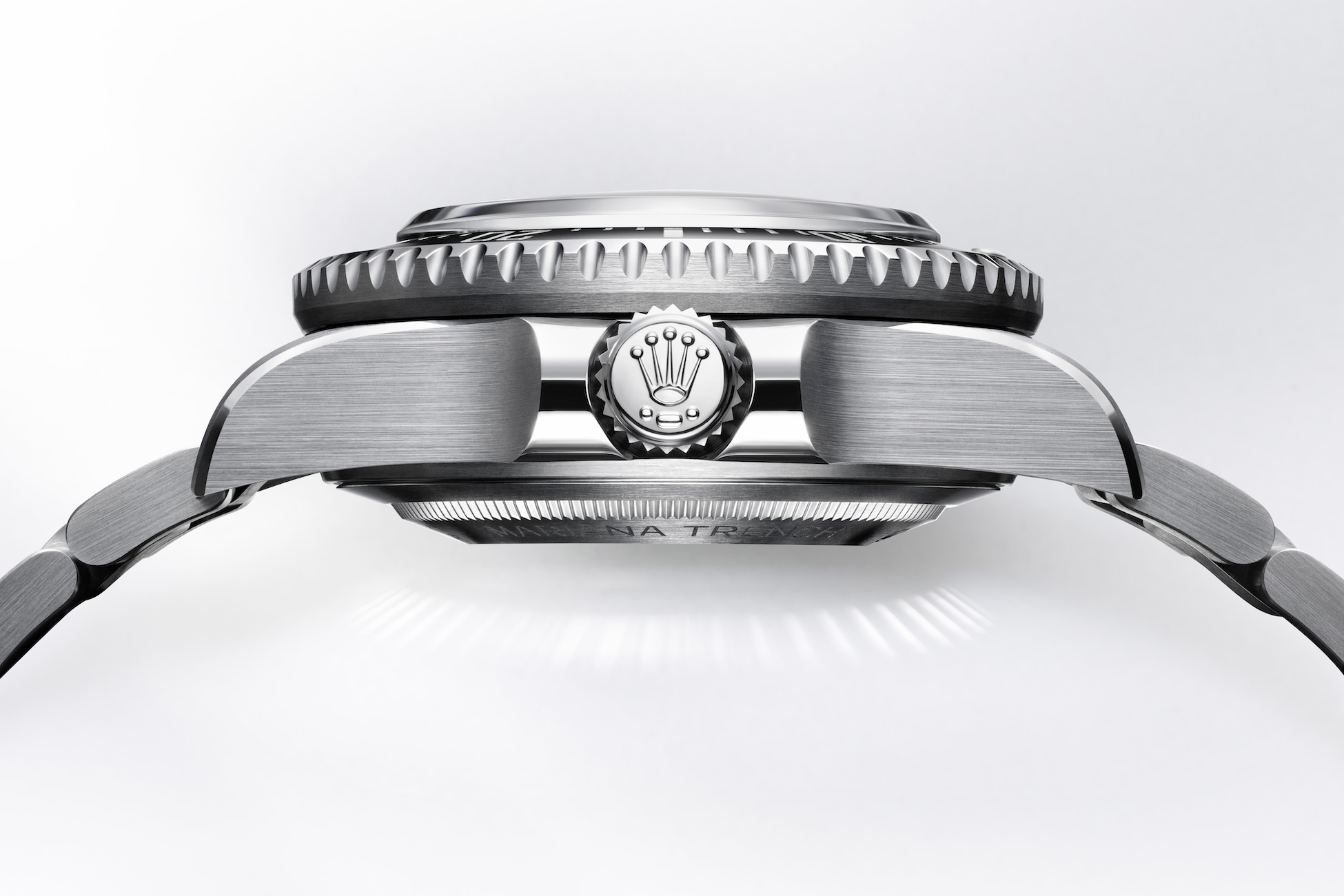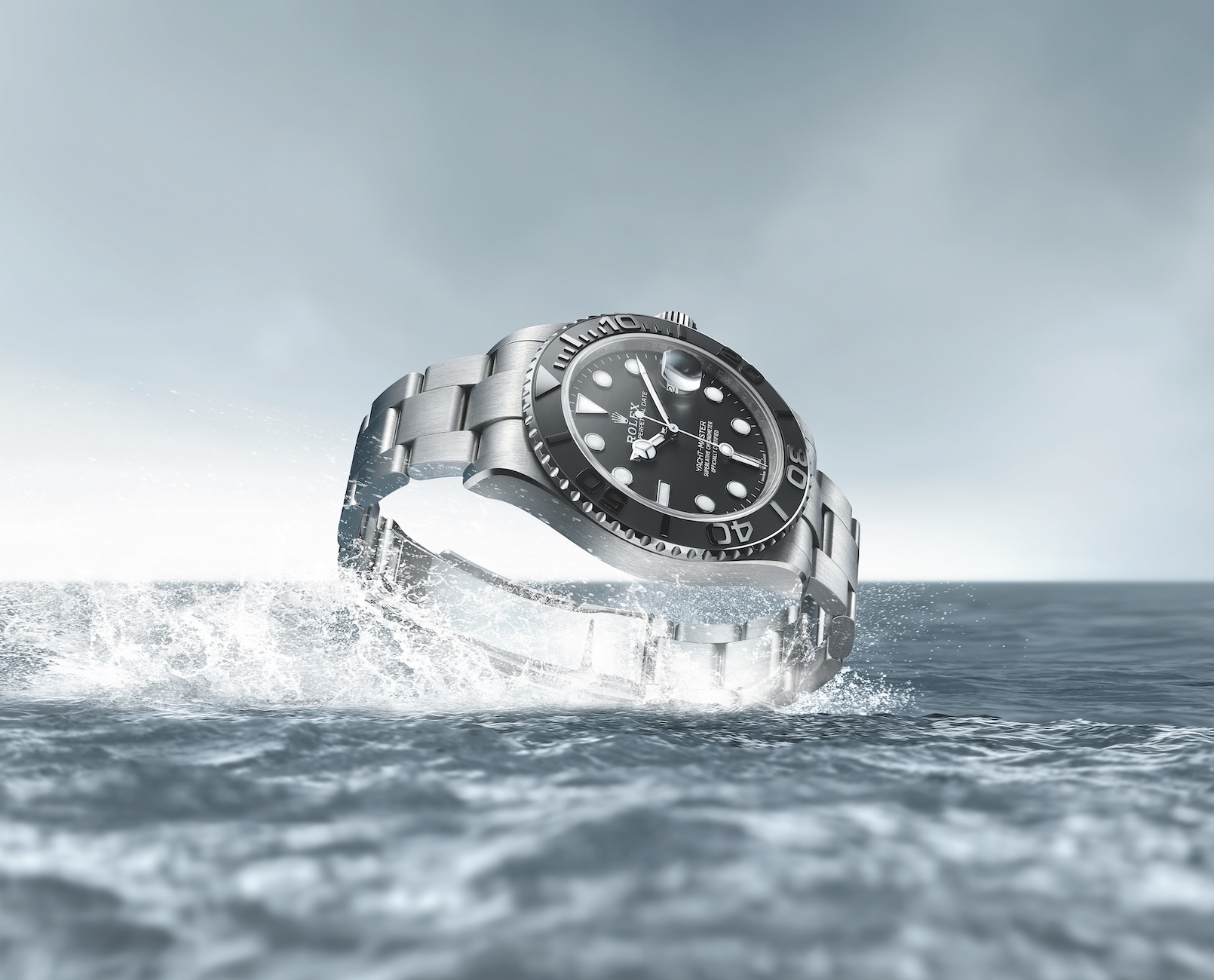The Rise of Titanium Watches with Rolex
Perhaps more than any other material that we have covered so far, the stars might be right for titanium to truly take off. We first tackled this material in 2021, right on the heels of our ceramic special, and there were some links. While the world has since moved on from sweeping post-pandemic concerns, the watch-buying world has embraced titanium wholeheartedly, even though statistics indicate that this metal (and its alloys) accounts for under 10% of Swiss exports in 2024 (source: Statista). This will no doubt trend upwards because no less than Rolex has finally gotten into the game.

The Rolex Oyster Perpetual Yacht-Master 42 debuted in 2023 in RLX titanium (more on this later) and marked the first full watch case in any kind of titanium alloy for the brand; Rolex had previously used titanium for the caseback of the Deepsea model. It is this watch, and Rolex’s subsequent Deepsea Challenge model, that made us decide to give titanium, as opposed to all other materials, a more thorough re-examination of this issue. As usual, though, we are getting ahead of ourselves…
Read More: Yacht Style — Rolex Yacht-Master 42
To move things ahead and bring you up to speed, here is a brief primer on titanium, pulled and distilled from our 2021 special. If you have a watch cased in Grade 2 titanium, then that is commercially pure titanium; yes, commercially pure titanium is suitable for use in finished products. This is one of the amazing things about titanium, and is quite unparalleled, except perhaps for platinum (as far as watchmaking goes). So, what is titanium anyway?
A metallic element, titanium appears grey, or perhaps like unshining silver. In other words, it is colourless and not particularly lustrous. Its chemical element symbol is Ti and its atomic number is 22. A Group 4 transition metal, it lends its name to its grouping of metals, including zirconium (Zr), hafnium (Hf), and rutherfordium (Rf). See the gold section for more details on what the atomic number means.
In watchmaking, titanium has been in general use for 55 years now, with the Japanese getting a head start on the Swiss. Citizen was the first to experiment with this metal back in the day, and yet perhaps even this storied firm might be surprised to see how far it has come. These days, titanium alloys are even used in the most mundane of things, including woks, so our collective ability to work with it has improved dramatically. Thus, titanium is hardly novel or exotic, in watchmaking, except when used in movements (more on this later, and yes, there are a few laters to address already).
One of the main benefits of titanium, as demonstrated in its extraordinary use in the aerospace industry, is that it offers a high strength-to-weight ratio, also known as specific strength, creating an extremely strong substance (see relevant sidebar). This simply means that titanium is relatively strong at a low weight. The easiest way to think about this, in terms of watches, is to consider the difference between a watch in titanium and a watch in steel, if they are roughly the same size.
When watchmakers create models in titanium of something that exists in steel, they are effectively making something lighter, not stronger. It is the lightness, with relatively good strength, that makes titanium so useful. The titanium watch is much stronger at its weight than a steel watch would be, at that same weight. Titanium is simply less dense than steel, and certainly than iron.
Now, titanium offers a high level of mechanical resistance, otherwise known as mechanical impedance, making it extremely durable. It would not be suitable for a long-wearing item such as a wristwatch otherwise. It would certainly be no good for something like a dive watch, where it will be expected to take a beating and keep on ticking, as the saying goes.
Unlike ceramic, for example, titanium does not easily reach critical failure. In other words, it bends but does not break, like steel and aluminium. The point that it deforms is not that important here, but we will explore it a little.

To compare metals, it is necessary to introduce a titanium alloy into the picture, which for our purposes will be Grade 5. This is an alloy of titanium, aluminium and vanadium under the following formulation: Ti-6Al-4V. For stainless steel, we will use the standard 316L that most watchmakers favour.
We will use ultimate tensile strength (see the sidebar portion of the same name) here, with 316L clocking in at 485 MPa and Grade 5 rated at 1,170 MPa; MPa stands for megapascals, a unit of pressure. This does not mean that titanium is simply stronger, because some kinds of steel can reach 3,000 MPa.
As an outside reference here, aluminium is rated at 50MPa, and that is among the reasons why cases are so rarely executed in this material (again, some alloys and forms offer different properties).
On the matter of hardness, we will use the Rockwell scale (see ‘Hardness’). Approximately, 316L registers 79 while Grade 5 registers 41. Now, there are some subtleties to this measure, but broadly speaking, this result speaks to the point some collectors have noted on forums about titanium being softer than steel.
Again, some treatments increase the hardness of both steel and titanium (famously Duratect, also from Citizen, and DLC just about everywhere else), but this has an impact on one of titanium’s more attractive properties.
In the air, titanium creates a powerful oxide layer that prevents the material from reacting any further (see ‘Passivation’). This has the effect, in watches, of titanium cases looking less obviously scratched than stainless steel cases. The muted colour of titanium helps here too, but the effect is similar in Grade 5 titanium that has been polished. Of course, surface treatments upend all this, and should be considered when discussing with your friendly neighbourhood sales specialist.
The main benefit of titanium versus steel, though, as far as watches go, comes down to its corrosion resistance (‘Passivation’). This is a defining characteristic of titanium and carries over to most of its alloys. It marks the metal as quite special, as noted in our original segment on why the biomedical field uses it. In simple terms, a watch in titanium will not react to fresh water, sea water, typical swimming pool water, alkalis, acids and just about anything. It is the next best thing to platinum (which is a comparison we like to repeat, but it is relevant), but much cheaper and lighter.
As for cost, titanium is more expensive than steel, primarily because it is relatively more difficult to machine (it has to be worked in a contained setting with inert gases such as argon) and somewhat more expensive to process. The cost has little to do with rarity, which brings us to the first of our “laters.” Titanium lends itself quite easily to all sorts of useful alloys, which is demonstrated by all the grades of the material in use in watchmaking. This is why Rolex can brand its version, resulting in RLX titanium; this has enormous implications for what brands can do to both add value and extract the appropriate premium. Rolex itself confirms that it has selected a special grade 5 titanium alloy and that is what RLX titanium is.
Finally, titanium has been gaining notice for its usefulness in movements, as seen in TAG Heuer and Ulysse Nardin this year. Whether this picks up momentum – and we have every reason to think it will – will also be key to the rise of titanium.
This story was first seen as part of the WOW #79 Summer 2025 Issue
For more on the latest in luxury watch reads, click here.
The post The Rise of Titanium Watches with Rolex appeared first on LUXUO.





